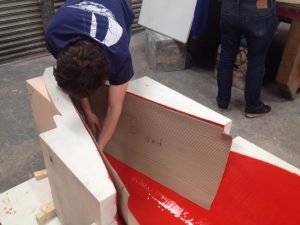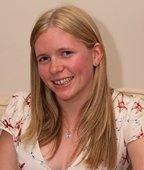Please come along to catch up on the latest thinking on risk.
Access to B175/1025 is via reception of B176. All are welcome
Vince Jenkins from LR will present on the following
Risk Management and Risk Assessment is a term that is everywhere today, how did we ever manage without it?
Is the term so often used or misused that it is of little value?
A different approach to the assurance of engineering design safety started in the UK nuclear industry in the late
1950’s. This presentation will revisit the fundamental objectives of the approach, and seek to answer several questions:
• Are the objectives of risk management still appropriate today?
• What degree of risk management is required in ship design?
• What the professional engineer needs today.
Monthly Archives: February 2015
Behind the Cameras at the 34th America's Cup
For those interested there will be a Southern Joint Branch RINA/IMarEST meeting on the 4th March at 14:00 for 14:30 by Alasdair Green, of ACLiveLine. Registration is advised more info on file attached AmericasCup (3)
Lecture Theatre A, Physics Building (Building No. 46), Highfield Campus, Southampton, SO17 1BJ
Ship Science Group Design Projects
 Our finalists are hard at work on their group design projects. These projects, worth a third of their marks in the final year are the culmination of the MEng degree programmes. This year the results of all the projects will be on display in our Faculty’s first end of year design show on the 12th June. If you would like an invite please contact us for further details. As the projects start coming to completion we will be posting information at to their achievements.
Our finalists are hard at work on their group design projects. These projects, worth a third of their marks in the final year are the culmination of the MEng degree programmes. This year the results of all the projects will be on display in our Faculty’s first end of year design show on the 12th June. If you would like an invite please contact us for further details. As the projects start coming to completion we will be posting information at to their achievements.
One GDP project this year – Team Fortitude are building an autonomous surface vessel with the capability of crossing the Atlantic. Such vessels will become ever more common and provide some exciting applied naval architecture and marine engineering challenges as well as enhancing our Maritime Robotics interests as we look into the challenge of increased use of autonomous systems in Maritime Shipping.
On-going research into the impact of freak waves on ships
Freak (or abnormal or rogue or extreme) waves are a now well-known phenomenon due to widely publicised reports in the media of ship encounters with such waves.
 Research at the University of Southampton has been being conducted into the influence of freak waves on ships since 2007. Led by Dr Sally Bennett, investigations have taken the form of extensive towing tank testing into the motions and global loads experienced by a travelling vessel when encountering a freak wave in a range of sea conditions representative of those found around the globe. Such waves are unexpected, with a height at least twice that of the surrounding sea state. Often they occur in regular shipping lanes, meaning they are a real problem for the worlds shipping.
Research at the University of Southampton has been being conducted into the influence of freak waves on ships since 2007. Led by Dr Sally Bennett, investigations have taken the form of extensive towing tank testing into the motions and global loads experienced by a travelling vessel when encountering a freak wave in a range of sea conditions representative of those found around the globe. Such waves are unexpected, with a height at least twice that of the surrounding sea state. Often they occur in regular shipping lanes, meaning they are a real problem for the worlds shipping.

Results have shown significant increases during tank testing not only in the measured responses but also those observed using high-speed camera imagery, compared to in a random sea state that does not contain a rogue wave. Figure 1 shows a naval frigate travelling at the model scale equivalent of 18 knots through a freak wave; rather than being able to climb over the wave the vessel instead tunnels though the wave crest before falling down into the following wave trough resulting in significant amounts of green water and slamming loads on the bow of the vessel. Indeed measurements showed that the accelerations as well as the loads experienced by the vessel were substantially larger in this scenario than in a comparable random sea. Continue reading On-going research into the impact of freak waves on ships
Predicting the performance of uncertain systems with application to vibro-acoustics and electromagnetics
Prof Robin Langley will be speaking this Thursday 12th at 2pm in room 2013 in building 176. All welcome.
This talk will review computational methods for the analysis of built-up systems that have very many degrees of freedom, and which have uncertain or random properties. The aim is to predict not only the nominal performance of the system, but also the statistical distribution of the performance over an ensemble of random systems. A key element of the talk will be Statistical Energy Analysis (SEA), a technique that was championed at Southampton for many years by researchers such as Fahy, Lalor, Pinnington, Keane, Price, and Mace. Various extensions to this approach will be discussed including: the inclusion of non-parametric statistics and variance prediction, the coupling of SEA to the finite element method, the analysis of the combined effect of parametric and non-parametric uncertainty, and the prediction of performance limits.
Various industrial examples will illustrate the application of the method to aeronautical and automotive systems, and to electromagnetic compatibility (where the concern is with electromagnetic waves and Maxwell’s equations).
Biography
Robin Langley is Professor of Mechanical Engineering and Head of the Division of Mechanics, Materials and Design, in the Cambridge University Engineering Department. He has previously held academic positions at Cranfield and Southampton (Department of Aeronautics and Astronautics, 1991-1998), and he acts as a consultant to industry: previously with ESI on the development of the software package VA One, and most recently with Wavesix LLC on vibro-acoustics and electromagnetics.
A new approach to non-destructive evaluation (NDE) of structures
Fibre reinforced polymer composites offer lightweight solutions, but are currently not used efficiently due to inherent defects resulting from the manufacturing process. Research at the University of Southampton has focused on developing intelligent NDE systems that show how the defect influences structural performance by utilising imaging techniques that measure strain.

In traditional NDE approaches such as ultrasound and thermography only the size and position of the defect are provided. The barrier to applying the imaging based techniques in service, for example on-board ships or on aircraft, is that to make a measurement it is necessary to impart a load so until now the techniques have been confined to the laboratory test environment. In 2012 a team lead by Professor Janice Dulieu-Barton was awarded £1M through a MATERA+ EU Action to develop an imaging system that could be used in service or at the production stage. Dr Richard Fruehmann developed the initial system which is based on imparting a vibrational load that can be developed without a test machine. (Richard received his PhD from the University of Southampton in 2009.) Continue reading A new approach to non-destructive evaluation (NDE) of structures
Challenges and Developments in Maritime Safety and Security Assessment
Thursday 5th Feb 2015, Room 1025 B175 (entrance via B176)
We are very pleased to invite Professor Jin Wang, Director of Liverpool Logistics, Offshore and Marine (LOOM) Research Institute at Liverpool John Moores University will deliver an invited seminar.
Abstract
Safety and security assessment has been increasingly used to support maritime system design and operation. There has also been a growing international recognition that security issues of maritime systems need to be reviewed. This presentation will address major challenges and developments in maritime safety and security assessment. In particular, areas covered include regulatory regimes in maritime safety and security, IMO’s formal safety assessment, sea port security modelling, and piracy related ship operations together with case studies. Some advanced techniques for maritime safety and security assessment are outlined to demonstrate their potential application.
Biography
Jin Wang is Professor of Marine Technology and Director of Liverpool Logistics, Offshore and Marine (LOOM) Research Institute at Liverpool John Moores University (LJMU), UK. Following just less than 5 years’ research as a research associate at Newcastle University, he joined LJMU as a lecturer in 1995, and was promoted as Reader in Marine Engineering and Professor of Marine Technology in 1999 and 2002 respectively. He has been involved in maritime safety and security for the past 25 years. His extensive publications include 2 research monographs and more than 100 SCI cited journal papers relating to maritime safety and security. He has completed supervision of more than 40 doctoral/postdoctoral researchers in the fields of maritime safety and security.
